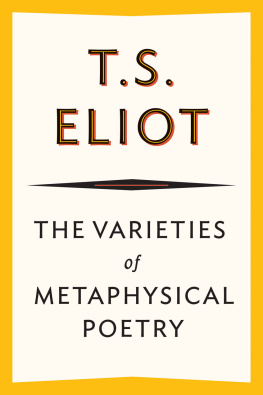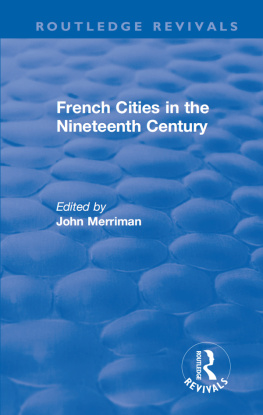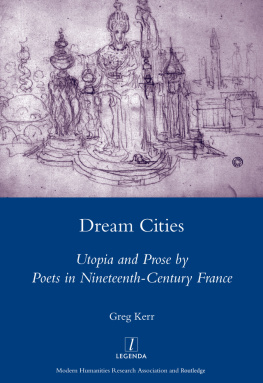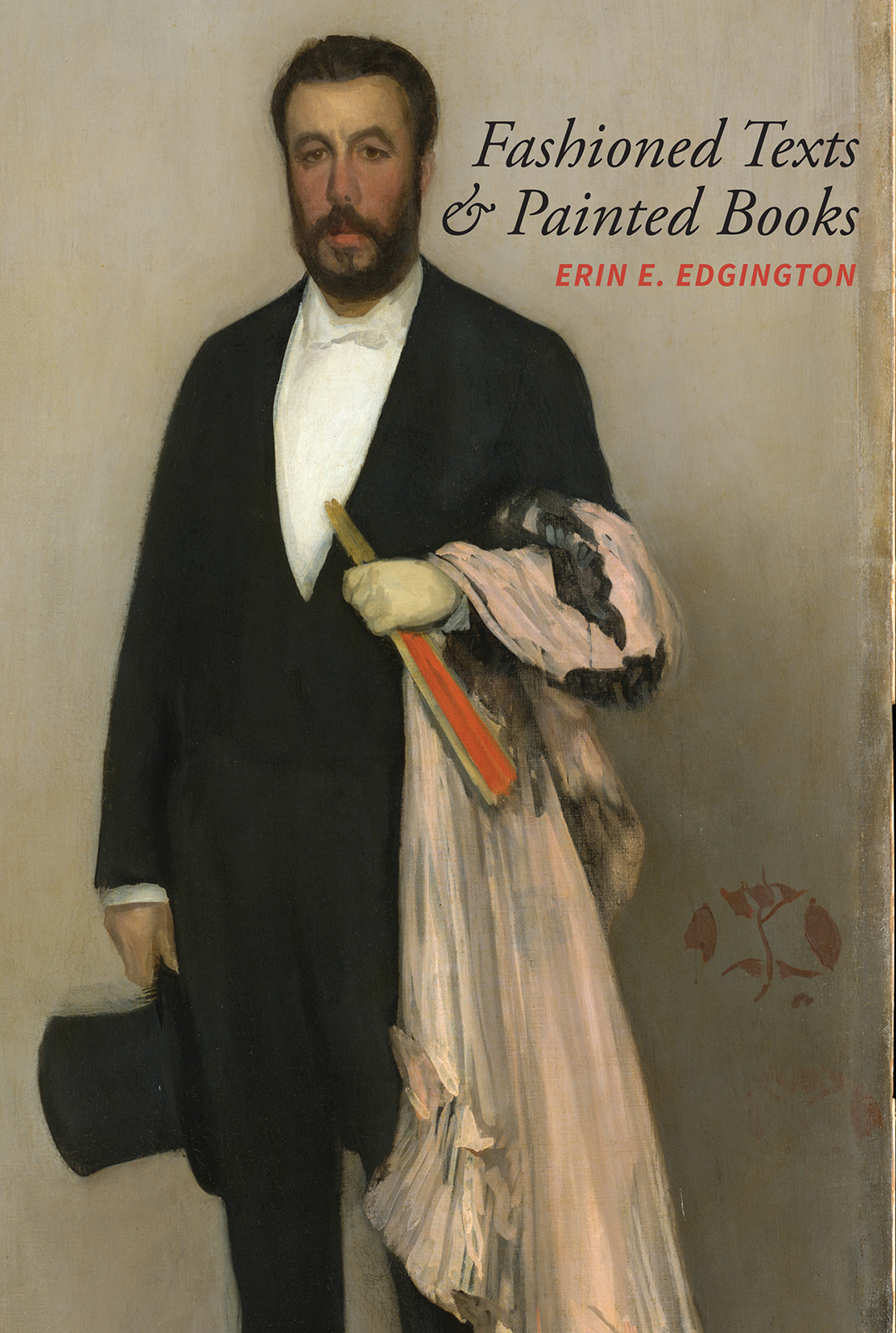Frank A. Domnguez, Editor-in-Chief
William F. Edmiston
Ronald W. Tobin
Colette H. Winn
Earl E. Fitz
Ronald W. Sousa
Jon M. Tolman
Cecelia J. Cavanaugh
Stuart A. Day
Malva E. Filer
David T. Gies
Jos M. Regueiro
FASHIONED TEXTS AND PAINTED BOOKS: NINETEENTH-CENTURY FRENCH FAN POETRY
BY
ERIN E. EDGINGTON
CHAPEL HILL
NORTH CAROLINA STUDIES IN THE ROMANCE
LANGUAGES AND LITERATURES
U.N.C. DEPARTMENT OF ROMANCE STUDIES
2017
Library of Congress Cataloging-in-Publication Data
Names: Edgington, Erin E., author.
Title: Fashioned texts and painted books: nineteenth-century French fan poetry / by Erin E. Edgington.
Other titles: North Carolina studies in the Romance languages and literatures ; no. 312.
Description: Chapel Hill: U.N.C. Department of Romance Studies, 2017. | Series: North Carolina studies in the Romance languages and literatures ; no. 312 | Includes bibliographical references and index.
Identifiers: LCCN 2017022830 | ISBN 9781469635774 (hardcover)
Subjects: LCSH: FansFranceHistory19th century. | Fan painting, FrenchHistory 19th century. | Decoration and ornamentFranceHistory19th century.
Classification: LCC NK4870. E34 2017 | DDC 736/.7094409034dc23 LC record available at http://lccn.loc.gov/2017022830
Cover image: James McNeill Whistler, Arrangement in Flesh Colour and Black: Portrait of Thodore Duret. The Metropolitan Museum of Art, Catharine Lorillard Wolfe Collection, Wolfe Fund, 1913 (13.20). Image The Metropolitan Museum of Art.
2017. Department of Romance Studies. The University of North Carolina at Chapel Hill.
ISBN 978-1-4696-3577-4
Printed with the collaboration of Artes Grficas Soler
www.graficas-soler.com
For my parents
ILLUSTRATIONS
FIGURE 1. Autre ventail de Mademoiselle Mallarm (1884) by Stphane Mallarm
FIGURE 2. Arrangement in Flesh Colour and Black: Portrait of Thodore Duret (1883) by James McNeill Whistler
ACKNOWLEGMENT
A Gertrude F. Weathers Dissertation Fellowship generously awarded by the Department of French and Italian at Indiana University funded the earliest stages of this research. Feedback from colleagues attending Nineteenth-Century French Studies, Society of Dix-Neuvimistes, and Interdisciplinary Nineteenth-Century Studies conferences and from anonymous reviewers for Neophilologus and Nineteenth-Century French Studies all helped me to refine aspects of this work. It surely would not exist in this form, though, without the tireless support of Sonya Stephens, Nicolas Valazza, Margaret Gray, and Janet Kennedy. Finally, thanks are due to my friends and colleagues Anna Shailer, Mark Black, Amber Panwitz, Kathryn Bastin, Damien Mooney, and Michael Kunz who saw me through the ups and downs of this project.
A portion of Re-Orienting the fte galante in Mallarms ventails by Erin E. Edgington is reproduced from Nineteenth-Century French Studies with permission from the University of Nebraska Press ( 2015) and a portion of Neophilologus, Octave Uzannes Lventail: A Literary Mythology of the Fan, 97, 2013, 663-675, Erin E. Edgington, Springer Science+Business Media Dordrecht 2013 is reproduced with permission of Springer.
PREFACE
WHY FANS?
The relationship between literature and material culture has lately attracted the attention of literary scholars, and the subject has proven to be a fruitful area of inquiry within the context of nineteenth-century French studies in particular as monographs have appeared on subjects ranging from the dcor of the artists studio to the intricacies of bourgeois fancy dress with many others in between.
As accounts of material culture in literary texts, and even accounts dealing specifically with clothing, have proliferated, they have also tended to analyze references to material culture in isolation. This kind of analysis is not without benefits; it can be very useful, for instance, in deciphering social information. However, in this model material culture is often treated as a sort of corollary element of the text in question. While it is certainly possible to attribute undo significance to material culture, even in cases where a focused analysis of it is called for by the text, what is lacking in accounts that simply aggregate large samples of references to material culture (relying on frequency to indicate significance) is precisely an examination of its literary function. In short, in these accounts content is frequently considered without regard to form. It is my intention here to offer an analysis of a fashion accessory that considers not only its social dimensions, but also its aesthetic contributions.
My choice of the fan from among the numerous accessories worn by well-dressed nineteenth-century women is motivated by its unique relationship with the literary and, moreover, with the poetic. By the turn of the twentieth century, the fan had assumed the secondary identity (overlapping with its primary fashionable one) of a poetic object. In what follows, I explore the expression of this identity in works by Stphane Mallarm, Paul Claudel, Octave Uzanne, Marcel Proust, and Guy de Maupassant. Of these authors, Mallarms and Claudels works receive the most thorough treatment while the other authors works, and especially Uzannes, contribute instead to my overarching arguments about the significance of the fan in late-nineteenth-century France. Complementing my literary analyses of these works, and my account of the fans textual identity more generally, are art historical analyses of the unique visual paratexts associated with them intended to better situate fan poetry within the fans broader social context including, most notably, its omnipresence in the visual art of the period.






